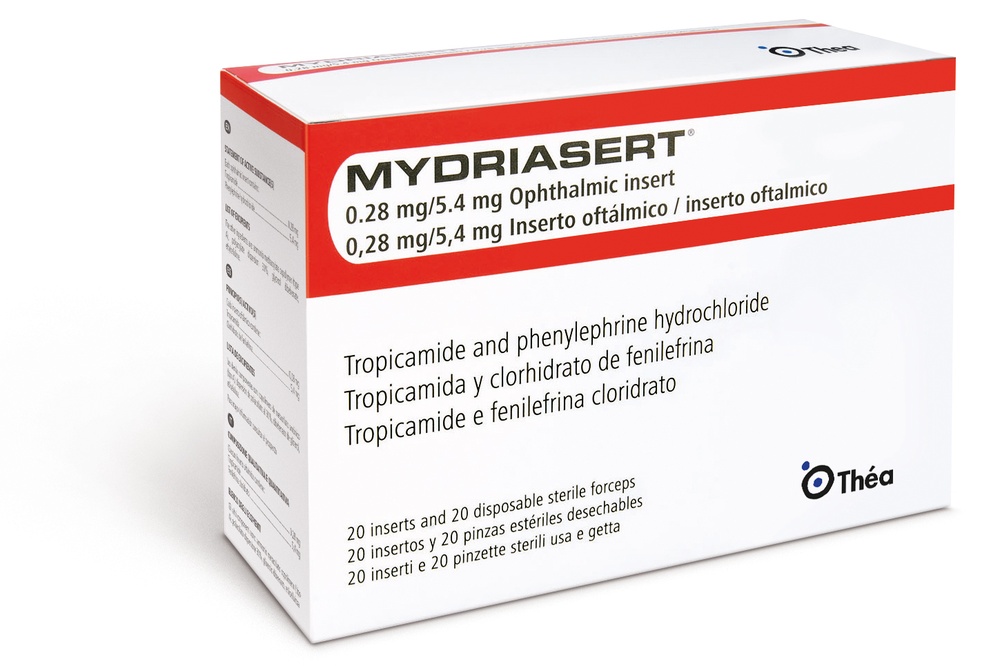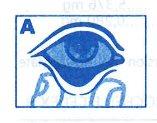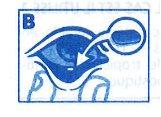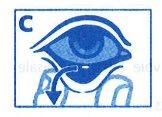

MYDRIASERT 0.28 mg/5.4 mg OPHTHALMIC INSERT

Ask a doctor about a prescription for MYDRIASERT 0.28 mg/5.4 mg OPHTHALMIC INSERT

How to use MYDRIASERT 0.28 mg/5.4 mg OPHTHALMIC INSERT
Introduction
PACKAGE LEAFLET: INFORMATION FOR THE USER
MYDRIASERT 0.28 mg/5.4 mg ophthalmic insert
Tropicamide and phenylephrine hydrochloride
Read all of this leaflet carefully before you start using this medicine because it contains important information for you.
- Keep this leaflet, you may need to read it again.
- If you have any further questions, ask your doctor, pharmacist, or nurse.
- This medicine has been prescribed for you only. Do not pass it on to others. It may harm them, even if their signs of illness are the same as yours.
- If you get any side effects, talk to your doctor, pharmacist, or nurse. This includes any possible side effects not listed in this leaflet. See section 4.
Contents of the pack and other information:
- What MYDRIASERT is and what it is used for
- What you need to know before you use MYDRIASERT
- How to use MYDRIASERT
- Possible side effects
5. Storage of MYDRIASERT
- Contents of the pack and other information
1. What MYDRIASERT is and what it is used for
MYDRIASERT is an ophthalmic product, which means it is only for ocular treatment.
The use of MYDRIASERT is limited to healthcare professionals.
MYDRIASERT will be placed in the lower eyelid of your eye by medical personnel. It is used to obtain mydriasis (pupil dilation) before surgery or for diagnostic use.
2. What you need to know before you use MYDRIASERT
DO NOT USE MYDRIASERTin the following cases:
- If you are allergic to tropicamide or phenylephrine hydrochloride or any of the other components of this medicine (listed in section 6).
- In patients with narrow-angle glaucoma or with a risk of precipitated glaucoma (increased ocular pressure).
- In children under 12 years of age.
WARNINGS AND PRECAUTIONS
- Because this medicine causes long-lasting visual disturbances, remember to attend accompanied to the consultation (see possible side effects).
if you experience discomfort after insertion of the insert, inform your doctor: it is possible displacement or, more rarely, loss of the insert.
- If you suffer from severe dry eye, your doctor may apply a drop of saline solution to the eye to reduce the risk of eye irritation.
- In case of hypertension (high blood pressure), atherosclerosis (increased thickness of the arterial wall), heart disease, hyperthyroidism (increased activity of the thyroid gland), or prostate disorders, inform your doctor.
- In certain individuals prone to it, mydriatics (products that dilate the pupil) can trigger an acute glaucoma attack (due to a sudden increase in pressure in the eye).
- The use of soft hydrophilic contact lenses is not recommended during treatment.
Children and adolescents
Mydriasert should not be used in children under 12 years of age as children seem to be more susceptible to the risks of serious side effects.
It is not recommended to use Mydriasert in children between 12 and 18 years of age due to the lack of adequate clinical experience.
Using MYDRIASERT with other medicines
Tell your doctor if you are using medicines that dilate the pupils (mydriatics) other than Mydriasert, so that your doctor knows the total amount of mydriatics you are exposed to.
Tell your doctor or pharmacist if you are taking, have recently taken, or might take any other medicines, including those obtained without a prescription. Although Mydriasert is applied locally, this information may be important because medicines can influence each other's action.
Pregnancy and breastfeeding
There is not enough data on the use of Mydriasert or its active components in pregnant women. Therefore, Mydriasert should not be used during pregnancy unless necessary.
It is not recommended during breastfeeding.
Driving and using machines
Do not drive or operate machines because MYDRIASERT can cause bothersome visual disturbances for a few hours (glare due to prolonged pupil dilation).
Important information about some of the components of MYDRIASERT
Athletes should be warned that this medicine contains an active component (phenylephrine hydrochloride) that can produce positive results in doping tests.
3. How to use MYDRIASERT
USE LIMITED TO HEALTHCARE PROFESSIONALS.
Mydriasert is intended for use in adults. Mydriasert should not be ingested.
The healthcare professional will place a single insert behind the lower eyelid of the corresponding eye. The healthcare professional will remove the insert once the pupil is sufficiently dilated, before surgery or investigation. The insert should not be left in the eye for more than 2 hours.
If you use more MYDRIASERT than you should
Since the medical or healthcare professional will place a single insert in the eye, the risk of using more Mydriasert than recommended is unlikely. However, if the healthcare professional needs to use a mydriatic eye drop in addition to Mydriasert, there may be a risk of overdose of the active components of Mydriasert.
Some of the symptoms of overdoseof the active components of Mydriasert may be extreme fatigue, sweating, dizziness, slow heartbeat, coma, headache, rapid heartbeat, dry mouth and skin, unusual drowsiness, flushing, and sustained dilation of the pupils.
In case of overdose, contact the toxicology information service at the number: 91 562 04 20.
If you have any other questions about the use of this product, ask your doctor, pharmacist, or nurse
4. Possible side effects
Like all medicines, this medicine can cause side effects, although not everybody gets them.
Common: may affect up to 1 in 10 people:
- itching
- blurred vision
- visual discomfort due to the perception of the presence or displacement of the insert.
Uncommon: may affect up to 1 in 100 people:
- tearing
- irritation
- glare due to prolonged pupil dilation
- superficial punctate keratitis (inflammation of the cornea).
Rare: may affect up to 1 in 1,000 people:
- allergic reactions: blepharitis (inflammation of the eyelids), conjunctivitis (inflammation of the conjunctiva).
Very rare: may affect up to 1 in 10,000 people:
- seizures.
Corneal ulcer (small erosion of the eye surface) and corneal edema (inflammation of the eye surface) have been observed when the insert has been accidentally left in the eye.
In susceptible individuals, MYDRIASERT can trigger an acute glaucoma attack (sudden increase in intraocular pressure): in case of unusual symptoms after administration (redness, pain, and visual disturbances), consult your doctor immediately.
Although unlikely after administration in the eye, the active components contained in MYDRIASERT may cause the following side effects that should be taken into account:
- increased blood pressure, tachycardia,
- very rarely, serious accidents such as cardiac arrhythmia,
- tremors, pallor, headache, dry mouth.
Additional side effects in children:
Frequency not known: cannot be estimated from the available data:
- Fluid or swelling in the lungs
- Pallor around the eyes in premature babies
Reporting of side effects
If you experience any side effects, talk to your doctor, pharmacist, or nurse, even if it is possible side effects not listed in this leaflet. You can also report side effects directly through the Spanish Pharmacovigilance System for Human Use Medicines: https://www.notificaram.es. By reporting side effects, you can help provide more information on the safety of this medicine.
5. Storage of MYDRIASERT
Keep out of the sight and reach of children.
Do not use this medicine after the expiry date stated on the packaging after "EXP.". The expiry date is the last day of the month indicated.
Do not store above 25°C.
Use immediately after opening the packaging.
Do not use MYDRIASERT if you notice any damage to the packaging or the insert.
6. Contents of the pack and other information
Composition of MYDRIASERT
- The active substances are tropicamide 0.28 mg and phenylephrine hydrochloride 5.4 mg per ophthalmic insert
Other components areammonio methacrylate copolymer (type A), 30% polyacrylate dispersion, glycerol dibehenate, and ethylcellulose.
Appearance and packaging of the product
MYDRIASERT is supplied in a pouch.
MYDRIASERT has the appearance of a small white elongated tablet (4.3 mm x 2.3 mm).
Each pack contains another pouch with disposable sterile forceps used to place MYDRIASERT in the eye.
Packs of 1 insert and 1 forceps, 10 inserts and 10 forceps, 20 inserts and 20 forceps, 50 inserts and 50 forceps, or 100 inserts and 100 forceps.
Not all pack sizes may be marketed.
Marketing authorisation holder and manufacturer
Marketing authorisation holder
Laboratoires THEA
Rue Louis Blériot, 12
F-63017 Clermont-Ferrand Cedex 2, France
Manufacturer
BENAC
27A, Avenue Paul Langevin
17180 Perigny, France
or
BENAC
5 rue Albert Turpain
17000 La Rochelle (France)
Local representative:
Laboratorios Thea S.A
C/ Enric Granados, nº 86-88, 2ª planta
08008 Barcelona, Spain
This medicine is authorised in the Member States of the European Economic Area under the following names:
Germany Mydriasert
Austria Mydriasert
Belgium Mydriasert
Denmark Mydriasert
Spain Mydriasert
Finland Mydriasert
France Mydriasert
Italy Mydriasert
Luxembourg Mydriasert
Netherlands Mydriasert
Portugal Mydriasert
United Kingdom Mydriasert
Sweden Mydriasert
This leaflet was approved in November 2021.
This information is intended only for healthcare professionals.
Do not ingest.
Before using the product, check the integrity of the pouch. In case of damage to the pouch closure, sterility can no longer be guaranteed; in this case, use another insert from an intact package.
DOSAGE
The healthcare professional places a single ophthalmic insert in the lower conjunctival sac of the corresponding eye, a maximum of 2 hours before surgery or the investigation procedure.
Pediatric population
Mydriasert is contraindicated in children under 12 years of age.
There are no data in children from 12 to 18 years of age. Mydriasert is not recommended in these patients.
MODE OF ADMINISTRATION
Cut the sealed edge along the dotted line, open the pouch, and locate the insert. Pull down the lower eyelid by pinching it with the thumb and index finger (A) and apply the ophthalmic insert to the lower conjunctival sac with the help of the disposable sterile forceps included in the package, which should be discarded immediately after use (B).
INSTRUCTIONS FOR USE
The ophthalmic insert should not be left in the lower conjunctival sac for more than two hours. The doctor may remove the ophthalmic insert as soon as they consider that mydriasis is sufficient to perform the operation or procedure; at most, the insert should be removed 30 minutes after sufficient pupil dilation has been achieved. In case of discomfort, ensure that the insert has been correctly placed at the base of the lower conjunctival sac.
PRECAUTION: REMOVAL OF THE OPHTHALMIC INSERT
Before surgery or a procedure and as soon as the necessary mydriasis has been achieved, the ophthalmic insert should be removed from the lower conjunctival sac with the help of a sterile surgical forceps or a sterile swab or irrigation solution, lowering the lower eyelid (C).
|
|
|
Do not reuse the insert for the other eye of the same patient or for another patient.
Discard the insert after use. (See also section 3)
- Country of registration
- Active substance
- Prescription requiredYes
- Manufacturer
- This information is for reference only and does not constitute medical advice. Always consult a licensed doctor before taking any medication. Oladoctor is not responsible for medical decisions based on this content.
- Alternatives to MYDRIASERT 0.28 mg/5.4 mg OPHTHALMIC INSERTDosage form: INJECTABLE, Lidocaine hydrochloride: 10 mg/ml, Phenylephrine hydrochloride: 3.1 mg/ml, Tropicamide: 0.2 mg/mlActive substance: tropicamide, combinationsManufacturer: Laboratoires TheaPrescription requiredDosage form: EYEDROP, -Active substance: atropineManufacturer: Alcon Healthcare S.A.Prescription requiredDosage form: EYEDROP, 5 mgActive substance: atropineManufacturer: Alcon Healthcare S.A.Prescription required
Alternatives to MYDRIASERT 0.28 mg/5.4 mg OPHTHALMIC INSERT in other countries
The best alternatives with the same active ingredient and therapeutic effect.
Alternative to MYDRIASERT 0.28 mg/5.4 mg OPHTHALMIC INSERT in Польша
Alternative to MYDRIASERT 0.28 mg/5.4 mg OPHTHALMIC INSERT in Украина
Online doctors for MYDRIASERT 0.28 mg/5.4 mg OPHTHALMIC INSERT
Discuss dosage, side effects, interactions, contraindications, and prescription renewal for MYDRIASERT 0.28 mg/5.4 mg OPHTHALMIC INSERT – subject to medical assessment and local rules.

















